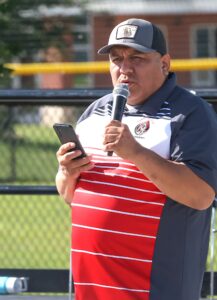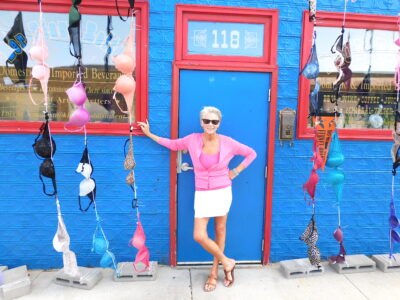SIM unit creates realistic scenarios for students

Jill Schramm/MDN Licensed practical nursing students Rocio Reina, left, and Carly Roach, right, monitor a simulated patient’s heart readings while delivering oxygen during a medical training inside a Simulation in Motion vehicle that stopped at Dakota College in Bottineau’s Minot campus Friday.
The simulated training offered nursing students at Dakota College at Bottineau’s Minot campus rose to a new level during the program’s annual Leadership Day event Friday.
A visit by a high-tech mobile simulation lab gave students a realistic experience in hands-on care that allowed them to test their knowledge and put it to practical use. The University of North Dakota’s Simulation in Motion van, one of four in the state, has been used across northwest North Dakota to provide a variety of training scenarios but it was a first in Minot for DCB.
“Originally, it was a grant from the Helmsley Foundation to provide medical training for rural EMS, ambulance services, critical access hospitals,” said Clifford Black, a paramedic who with his wife, Brenda, a nurse, operates the unit. Both are originally from Minot but now live in Garrison.
The role of the simulation lab has expanded beyond training emergency and rural responders. For instance, the SIM unit has traveled to train employees of businesses that require a high level of safety, such as coal mines, and to provide testing situations for resident doctors.
“We do training for all kinds of things – a lot of cardiac training, cardiac ready communities,” Black said. “We have about 80 scenarios we can pick from.”

Jill Schramm/MDN Registered nursing student Dani Gilstad, center, uses a stethoscope to check the status of a simulated patient as Naomi McKague, also an RN student, watches. Behind them, licensed practical nursing students Rocio Reina, left and Carly Roach, right, provide assistance during a training exercise Friday.
A lifelike mannequin can even simulate giving birth, allowing for training in different types of birthing complications.
The high-fidelity mannequins simulate breathing and have a pulse and eye pupil reaction. The mannequin’s vital signs and physical responses are controlled remotely from within a separate area of the unit.
“Depending on what the student does, the condition of the patient can go one way or the other,” said Tara DeCrans, assistant professor at DCB. “What they do can improve the patient. What they do or don’t do can deteriorate the patient. We’re not running anything that the patient is going to die today. It’s just a really good learning experience.”
Black said trainees can intubate the mannequin patient or insert intravenous lines and deliver medications.
The scenario facing registered and licensed practical nursing students Friday involved a hospitalized, 70-year-old “patient” named Edith with congestive heart failure. As Edith began experiencing pain and emergency issues, students responded to the conditions they were seeing and called for help from higher level care providers when necessary. Brenda Black remotely controlled Edith’s condition and spoke through the mannequin, responding to the nurses as a real patient would.
The unit is equipped with an ambulance bay and an emergency bay, with the emergency bay doubling as a hospital room for the nurses’ exercise on Friday.
DeCrans said Leadership Day included three additional activities, held at DCB’s location inside Trinity Heath West. The event offered an escape room that required correctly solving medical clues as well as simulations for skill testing and demonstration of cardio-pulmonary respiration (CPR).
- Jill Schramm/MDN Licensed practical nursing students Rocio Reina, left, and Carly Roach, right, monitor a simulated patient’s heart readings while delivering oxygen during a medical training inside a Simulation in Motion vehicle that stopped at Dakota College in Bottineau’s Minot campus Friday.
- Jill Schramm/MDN Registered nursing student Dani Gilstad, center, uses a stethoscope to check the status of a simulated patient as Naomi McKague, also an RN student, watches. Behind them, licensed practical nursing students Rocio Reina, left and Carly Roach, right, provide assistance during a training exercise Friday.






